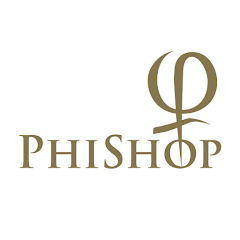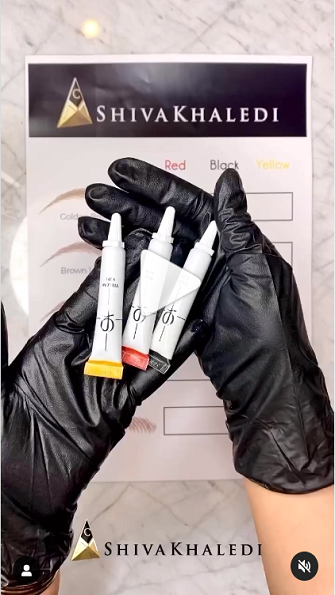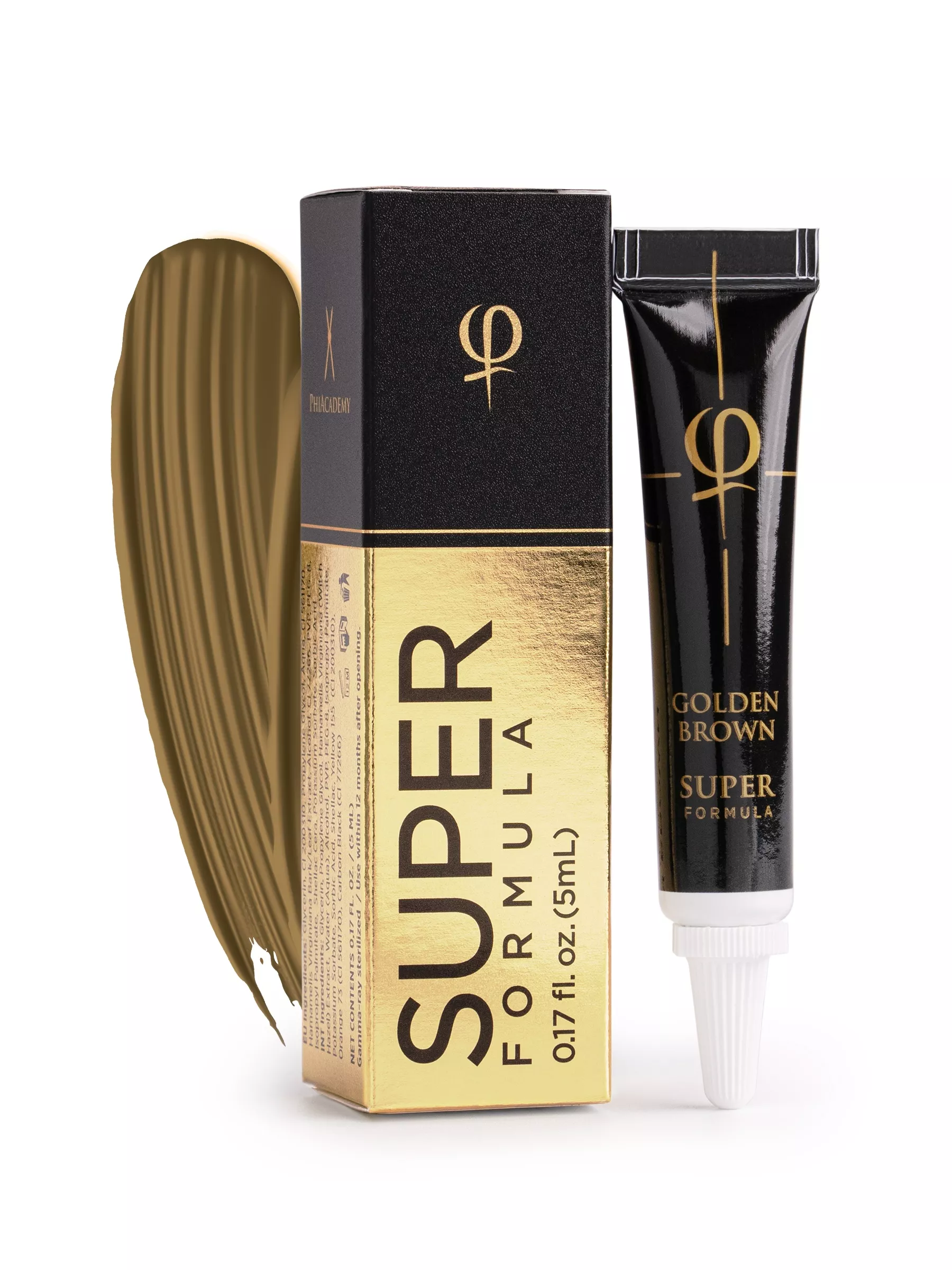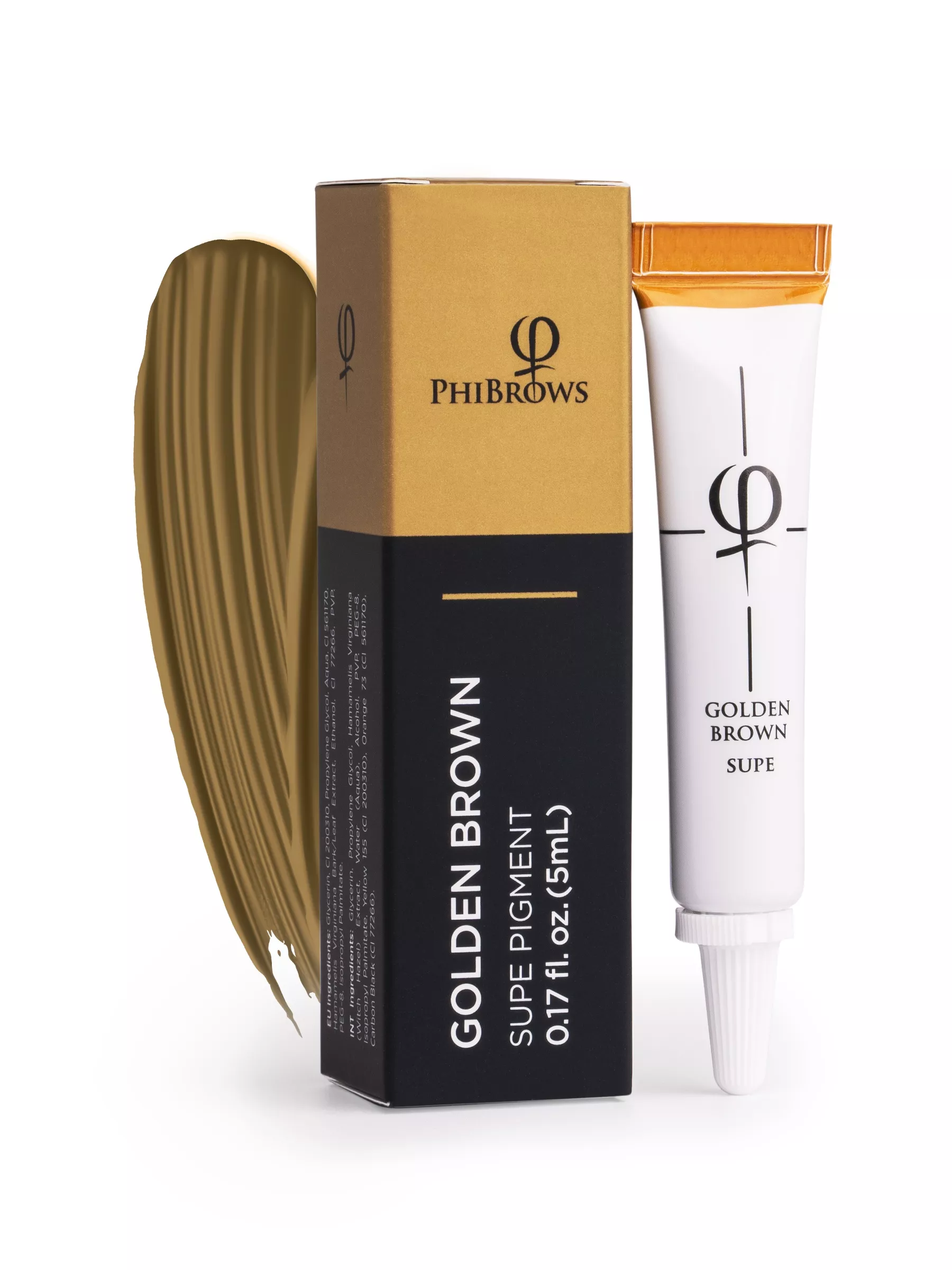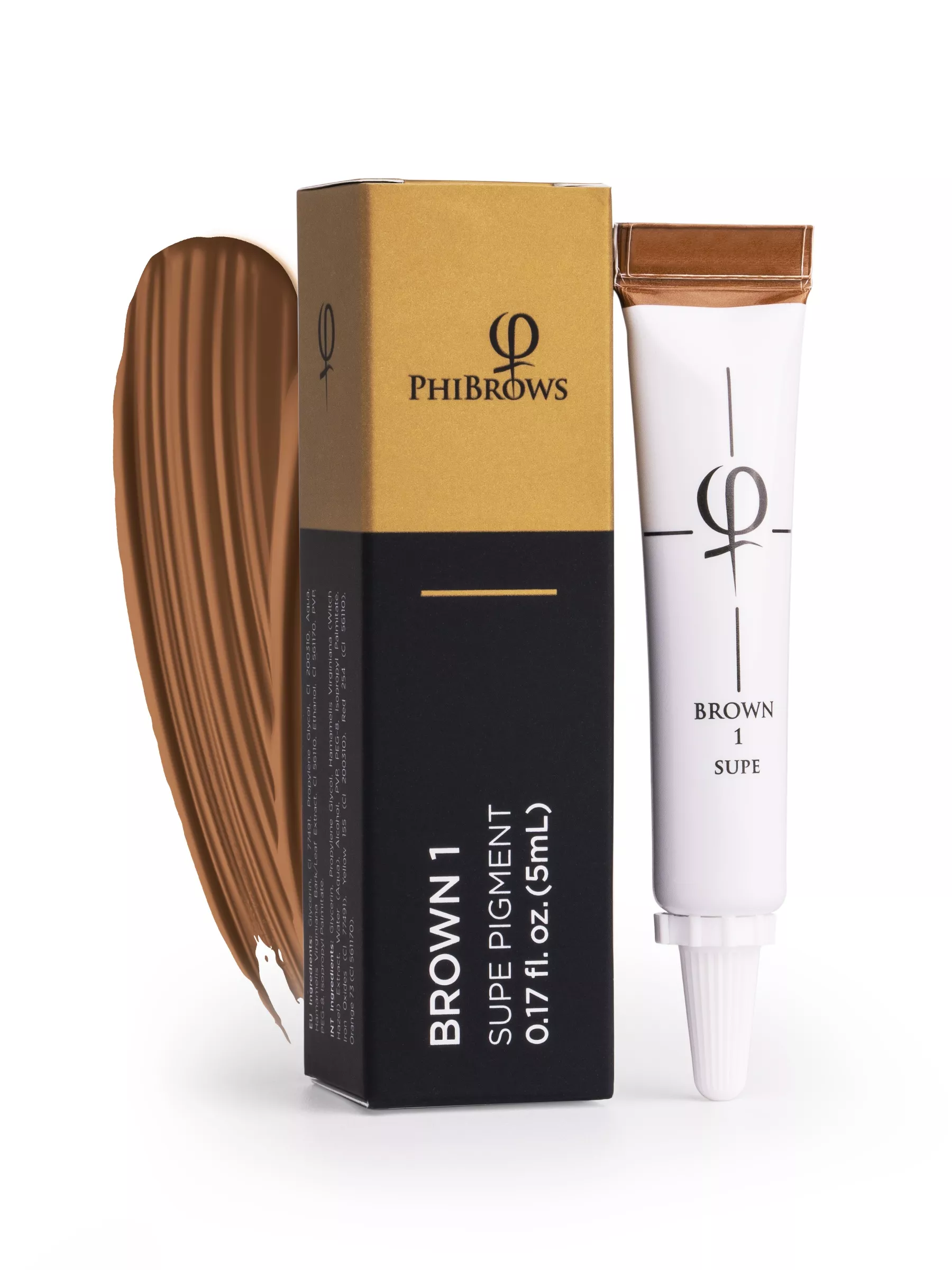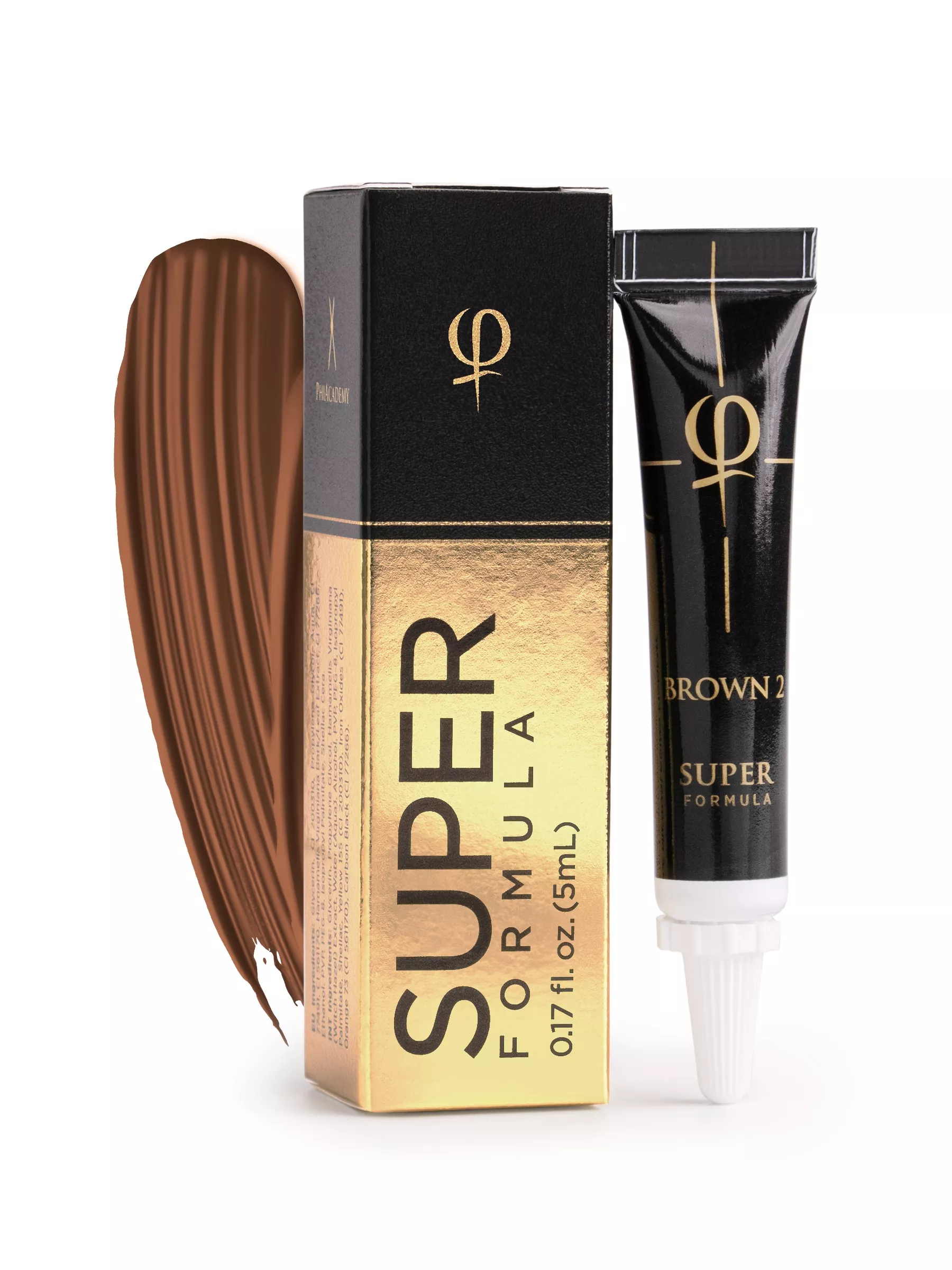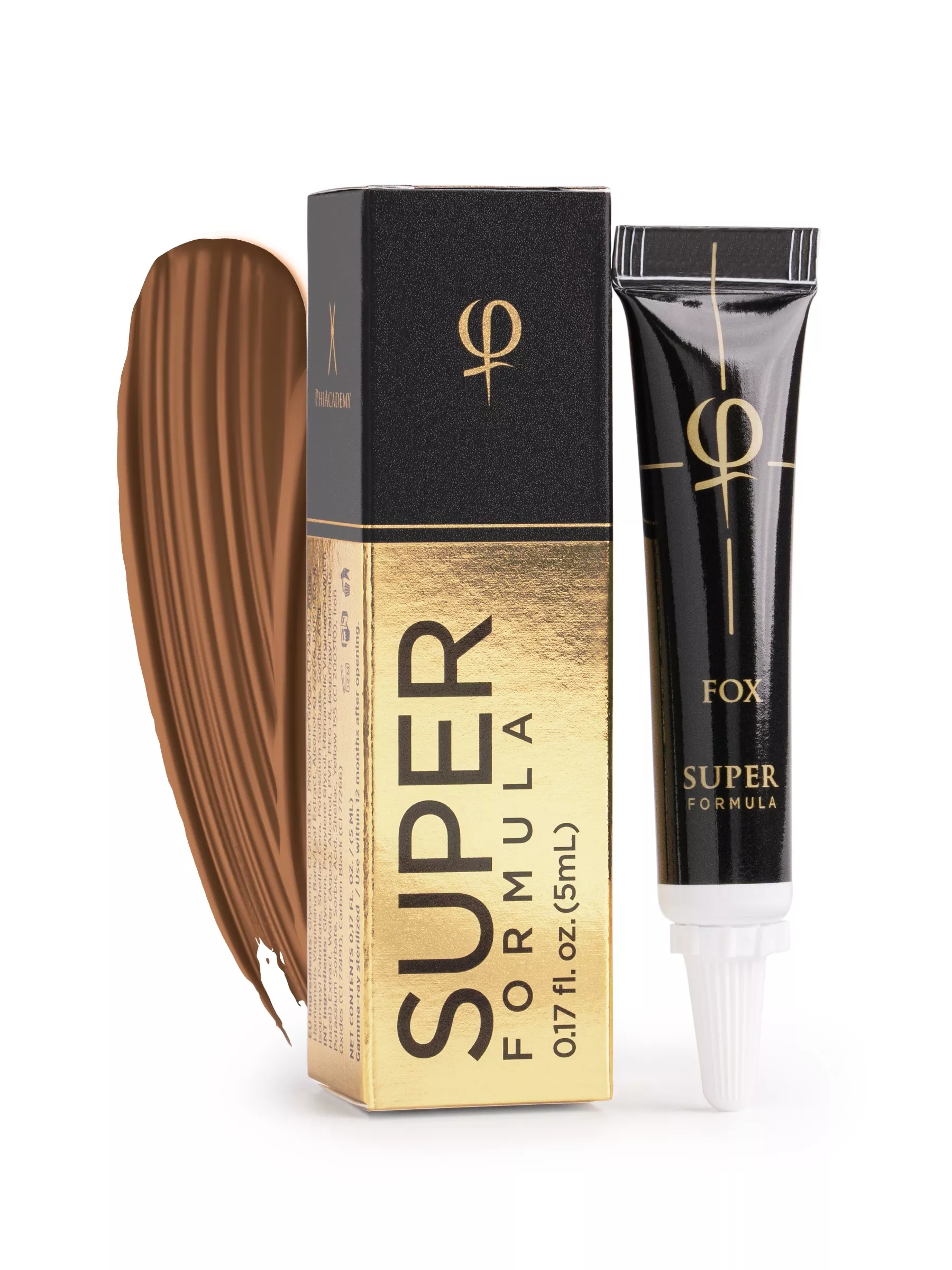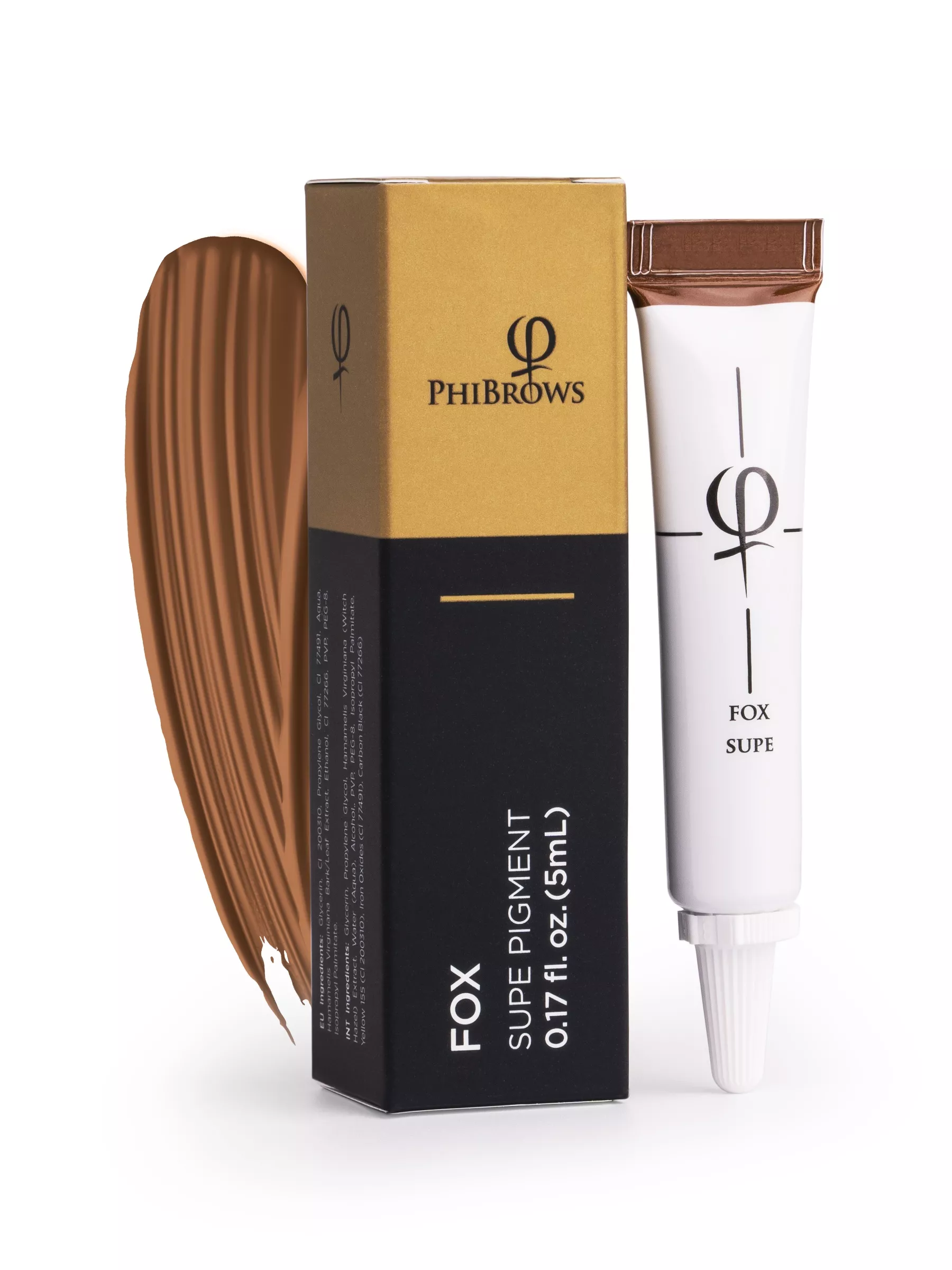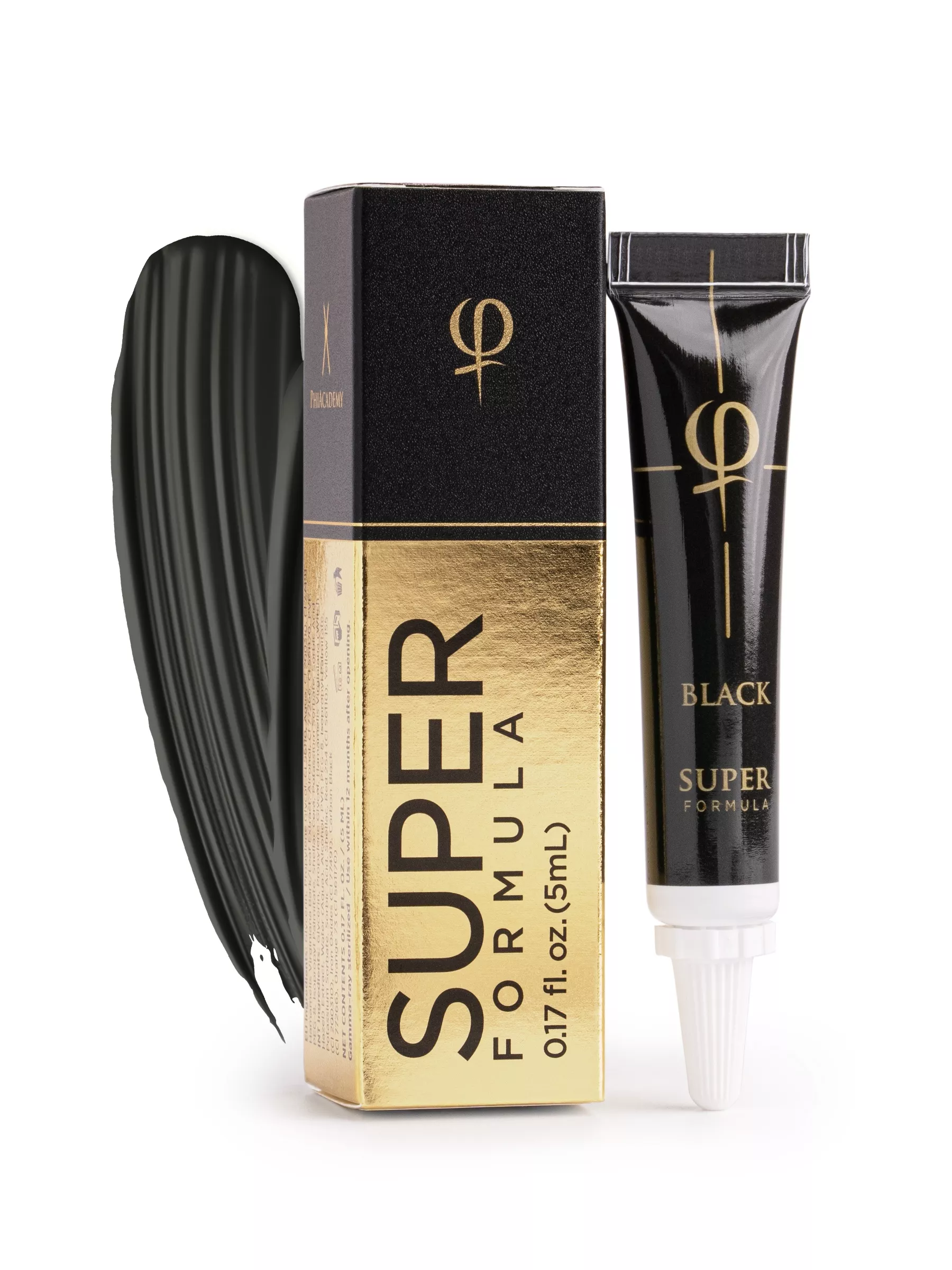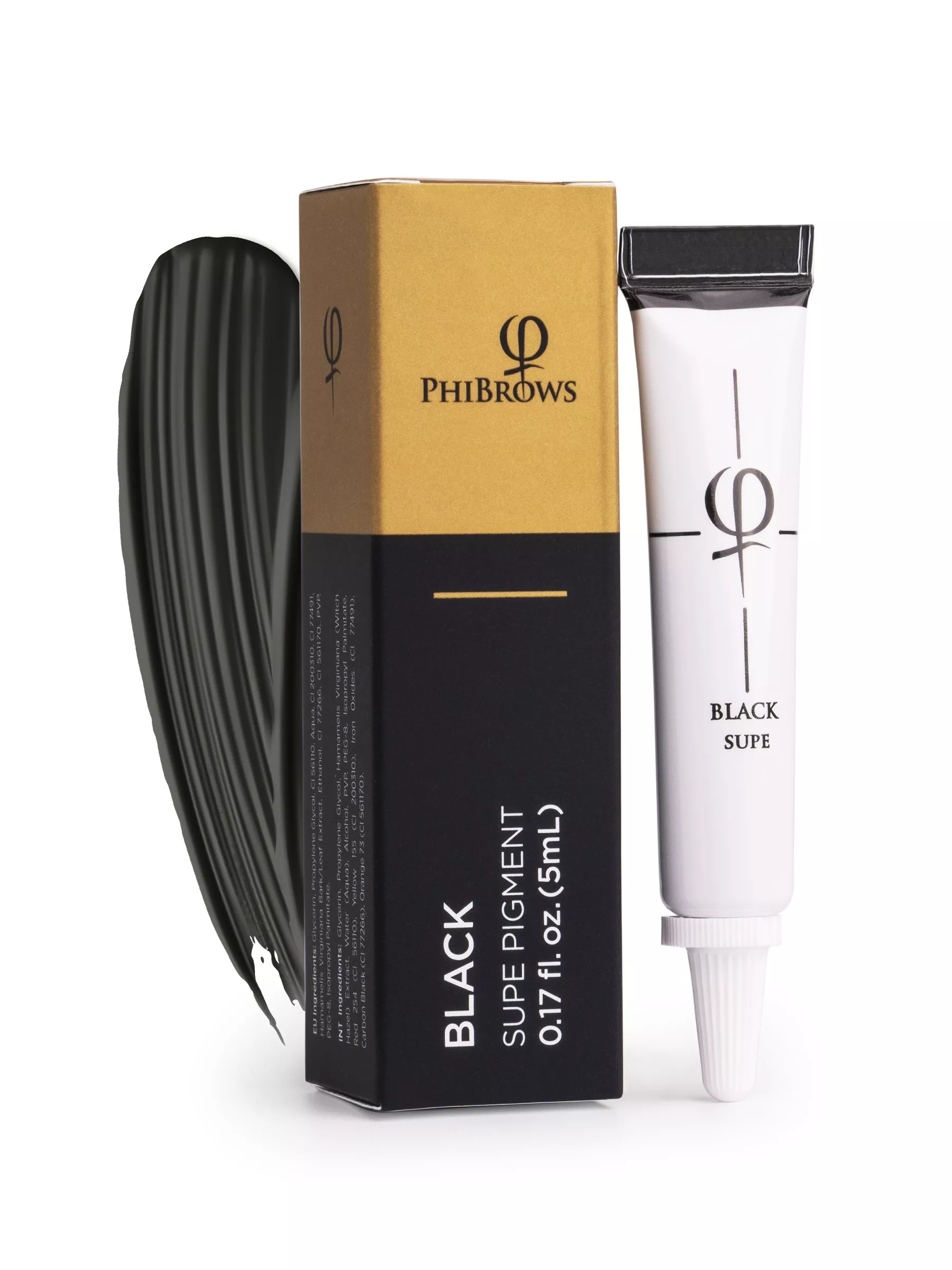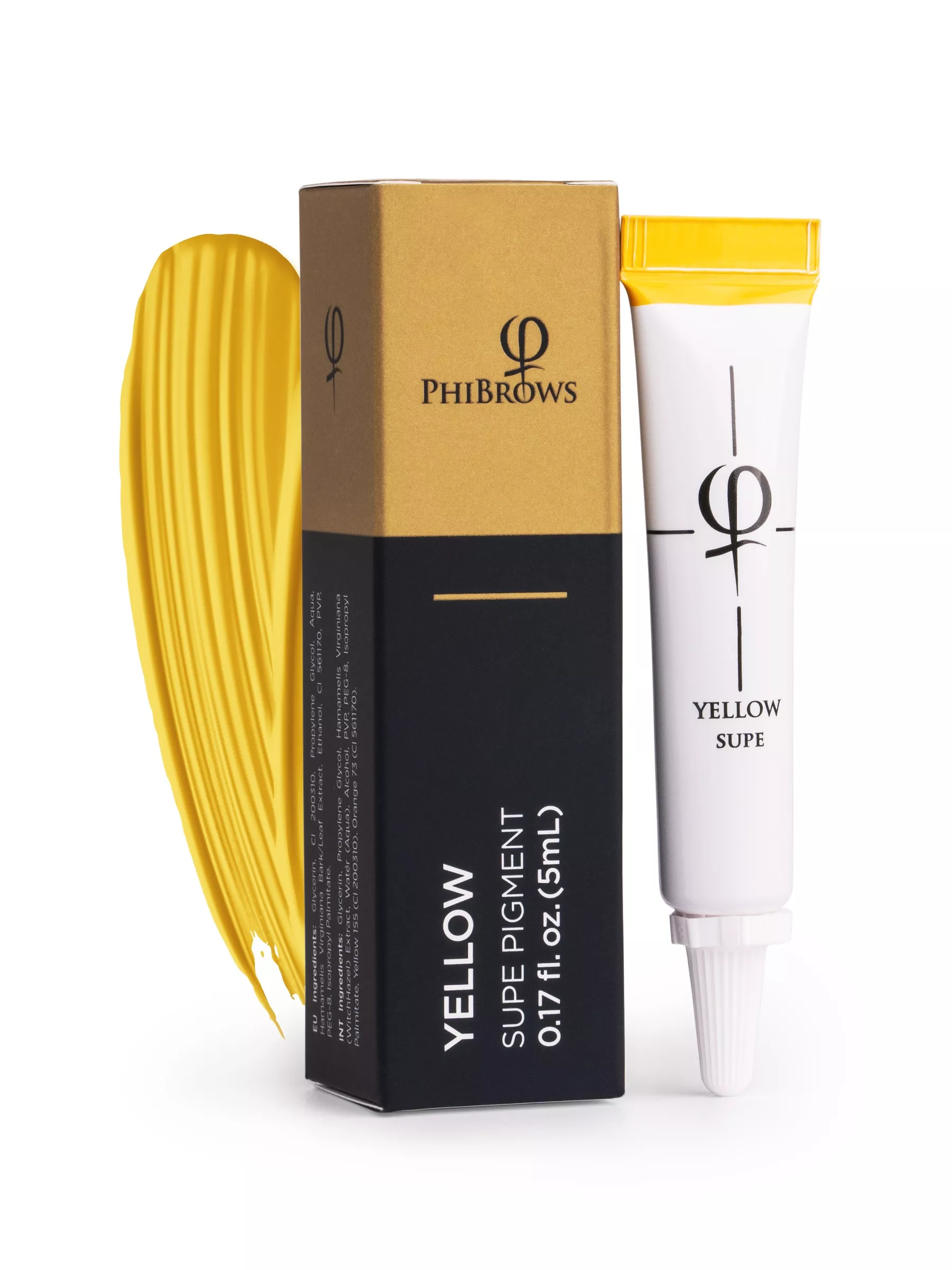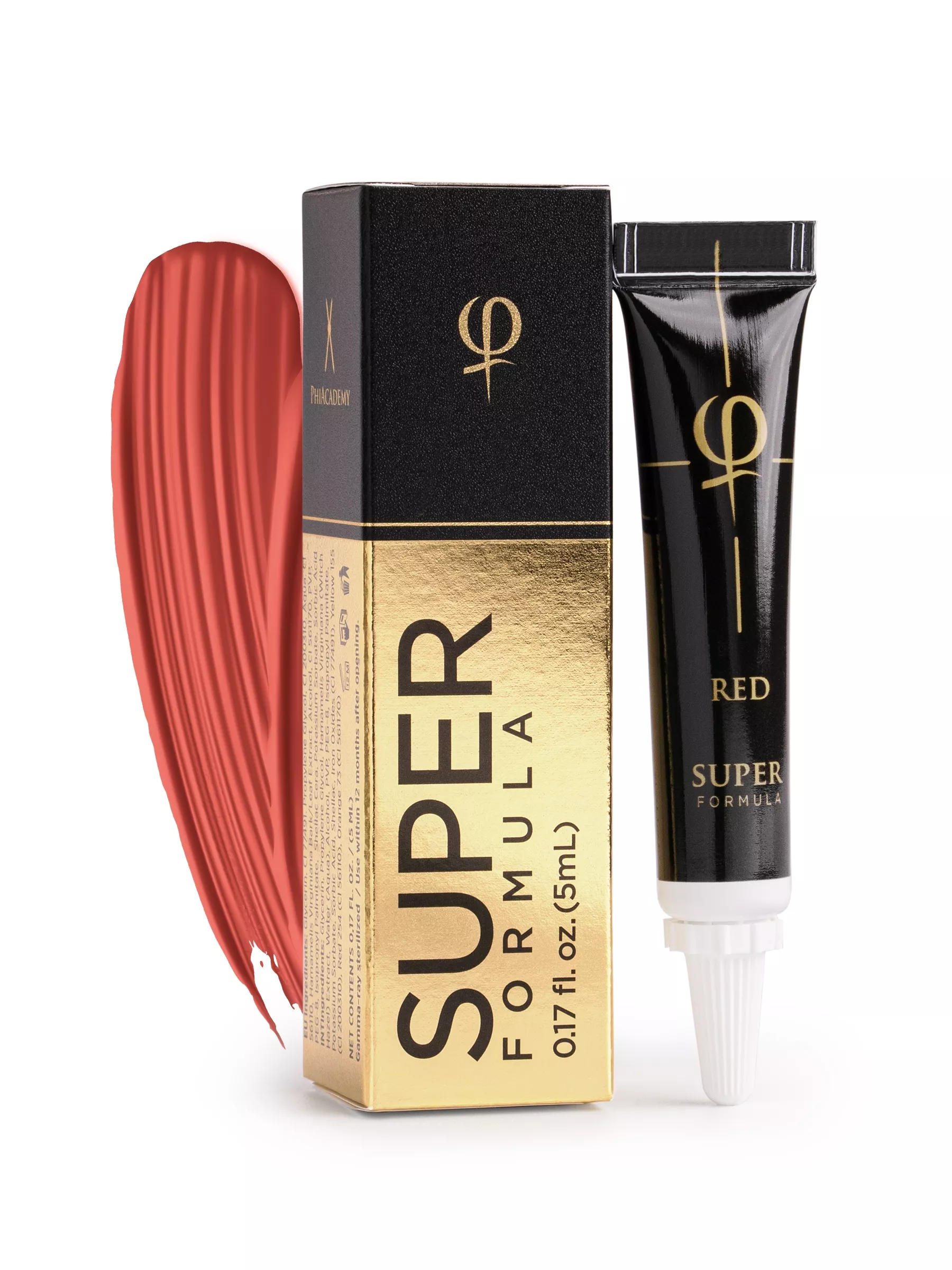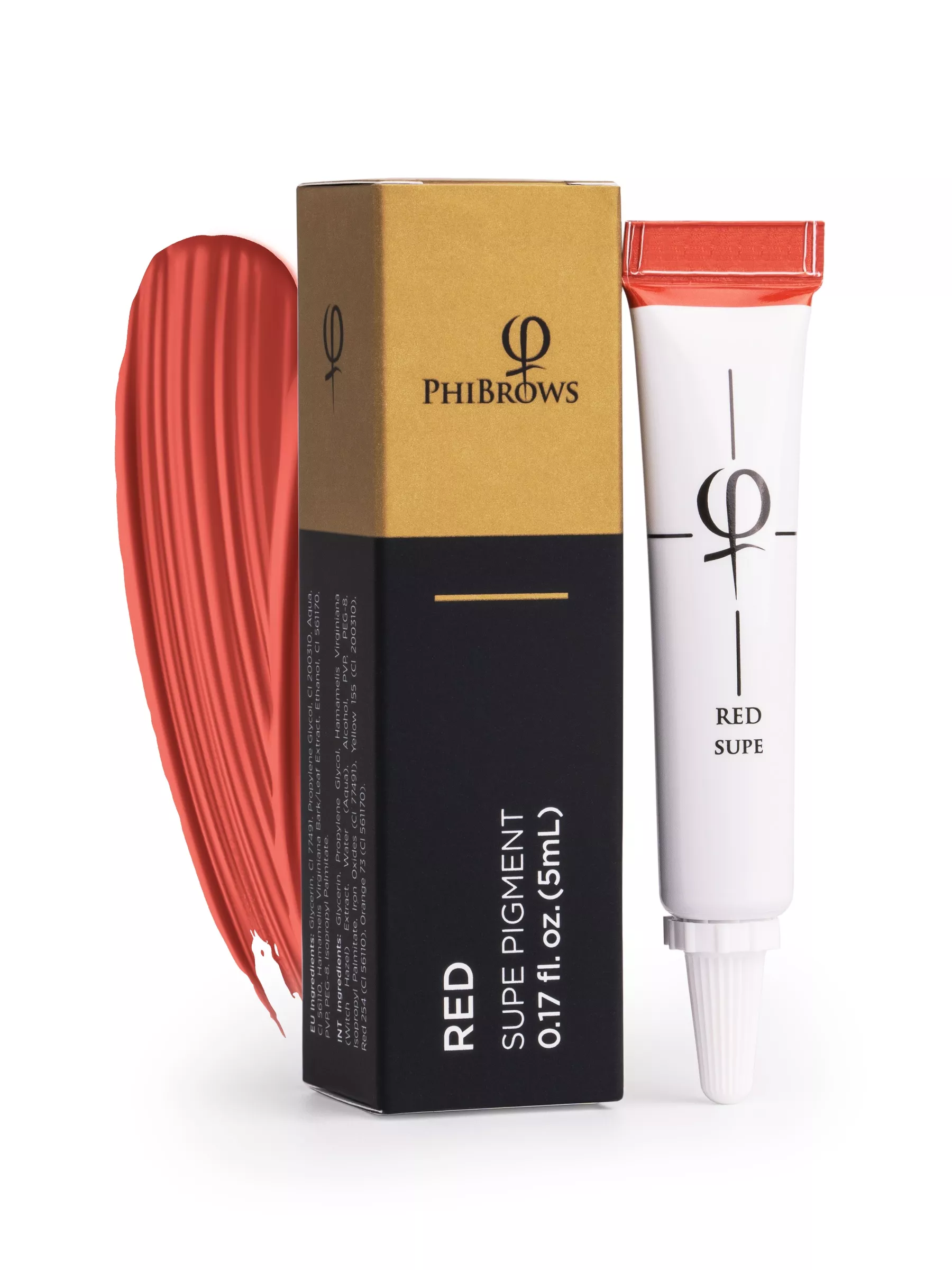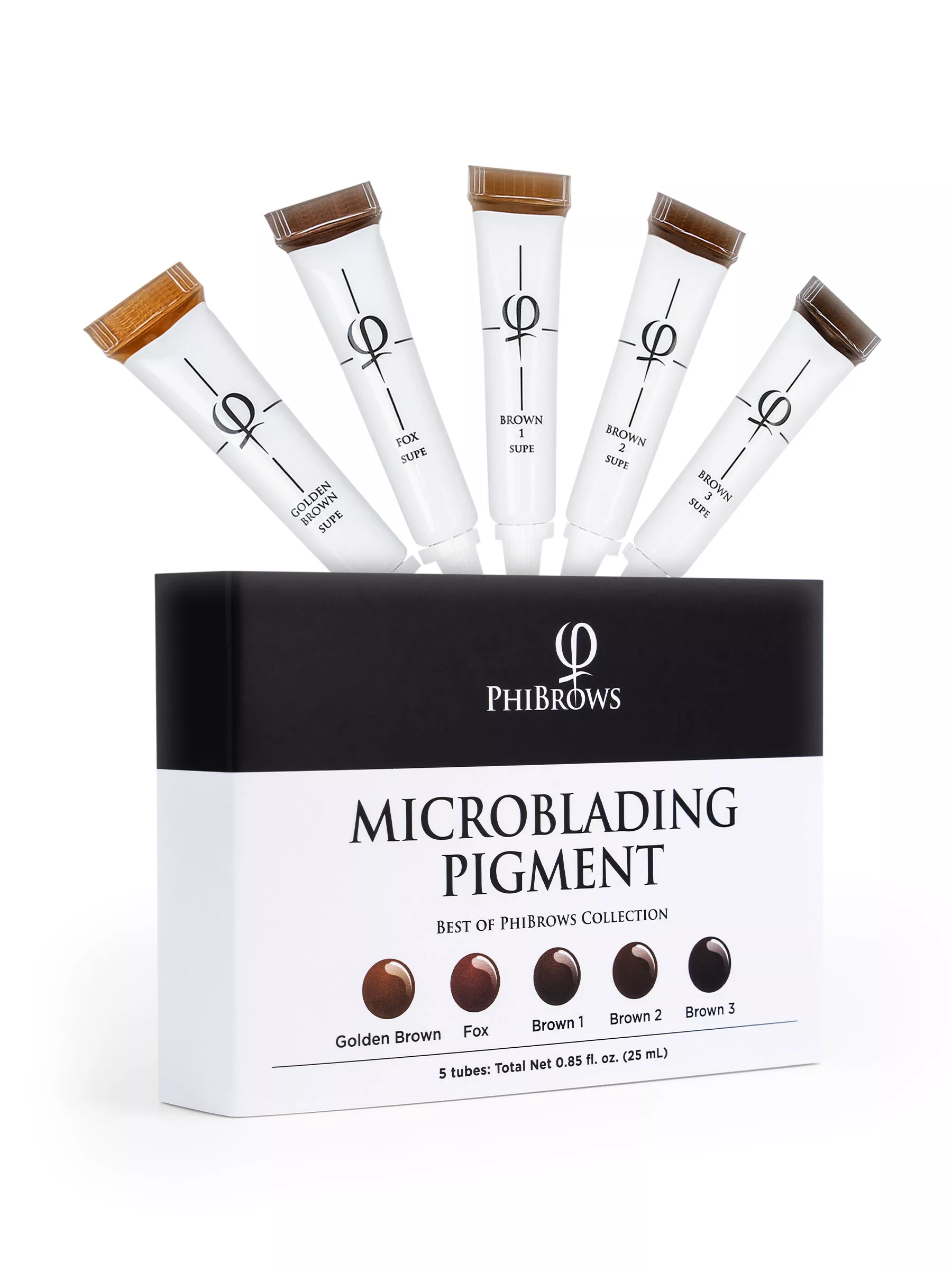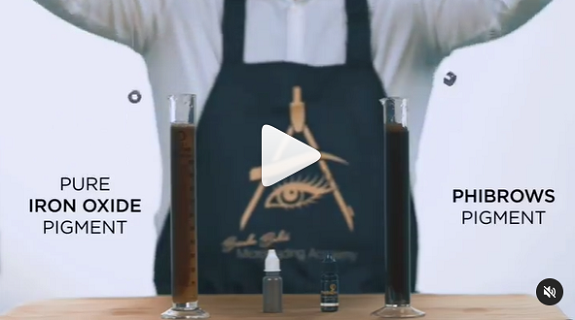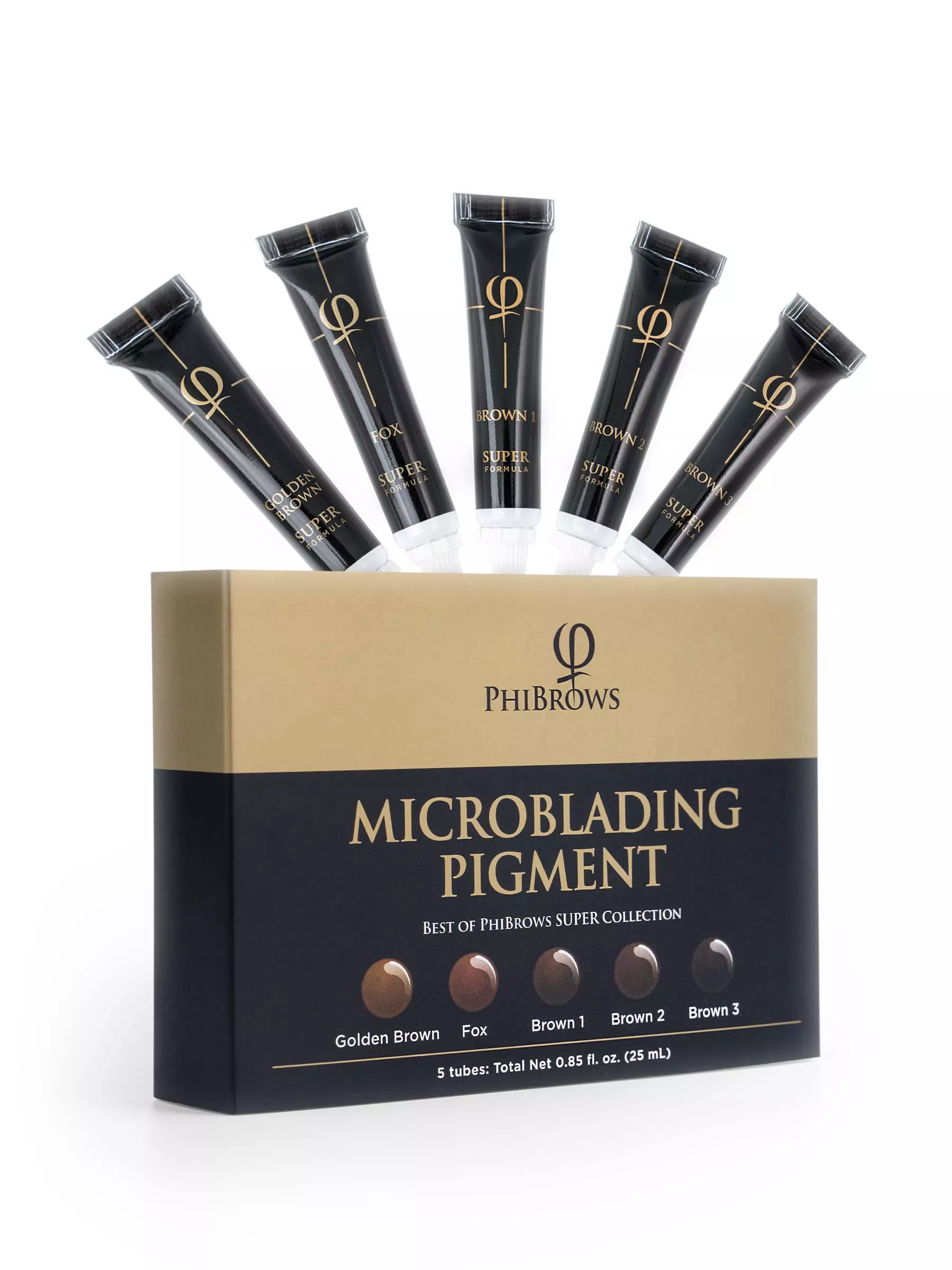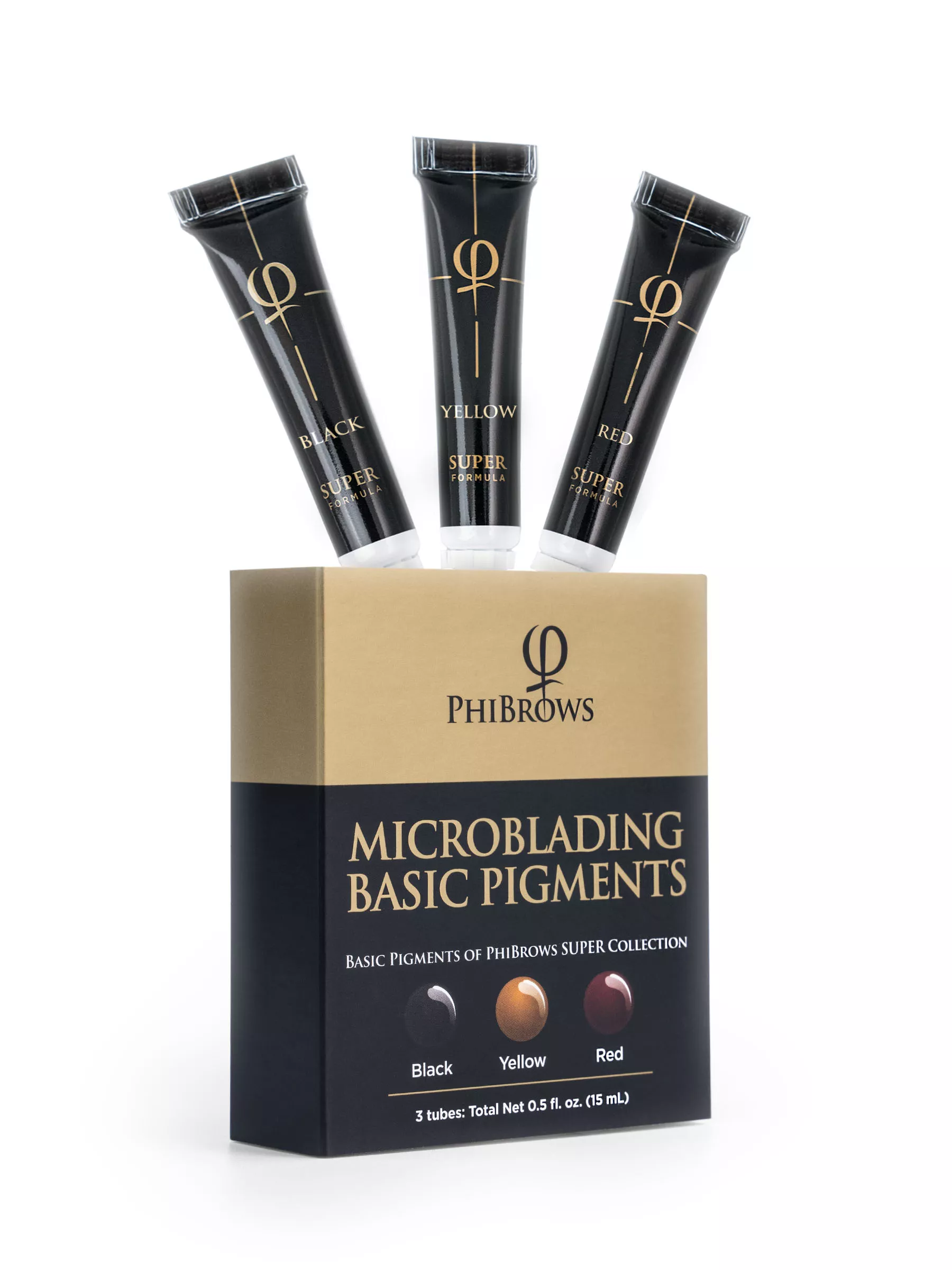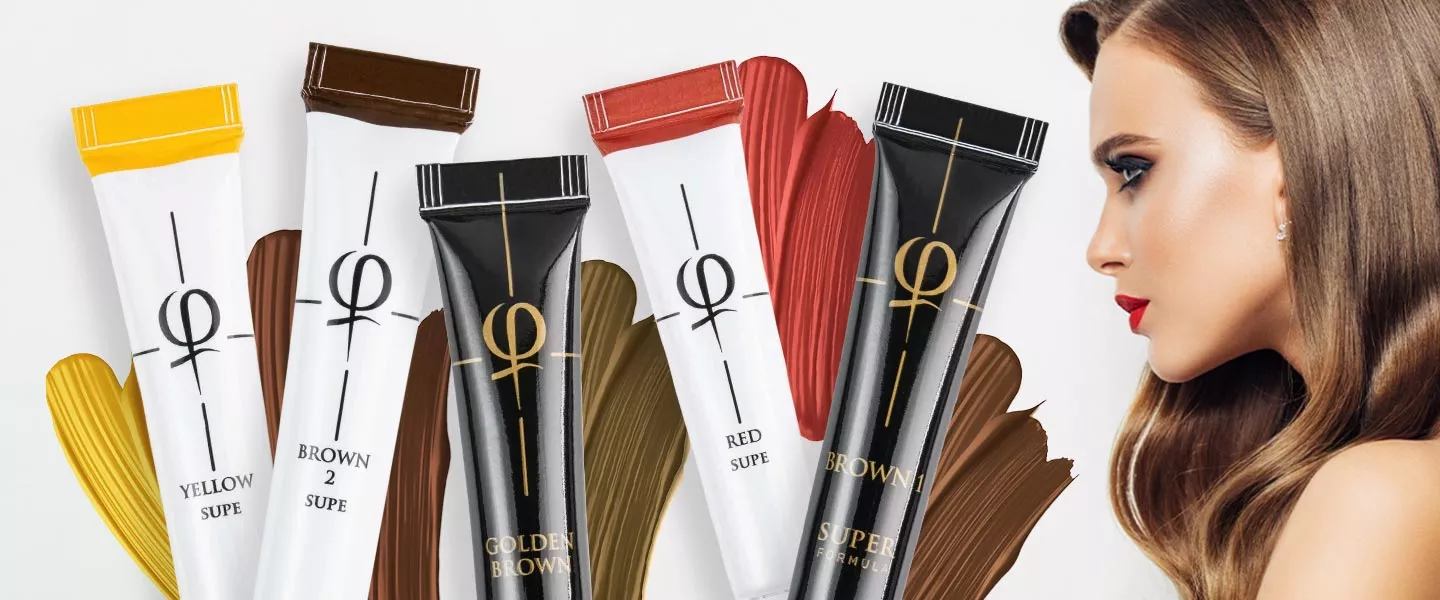
Official PhiBrows Colors Guide: Find the Right Shade for Every Client
PhiBrow pigments were designed to give flawless microblading results. But how do you choose the right pigment for your client? Read this simple guide through PhiBrows shades and see what they look like on different clients!
All You Need to Know About Our Pigment Shades
SUPE and SUPER collections have one very important thing in common - the colors are identical for both collections.
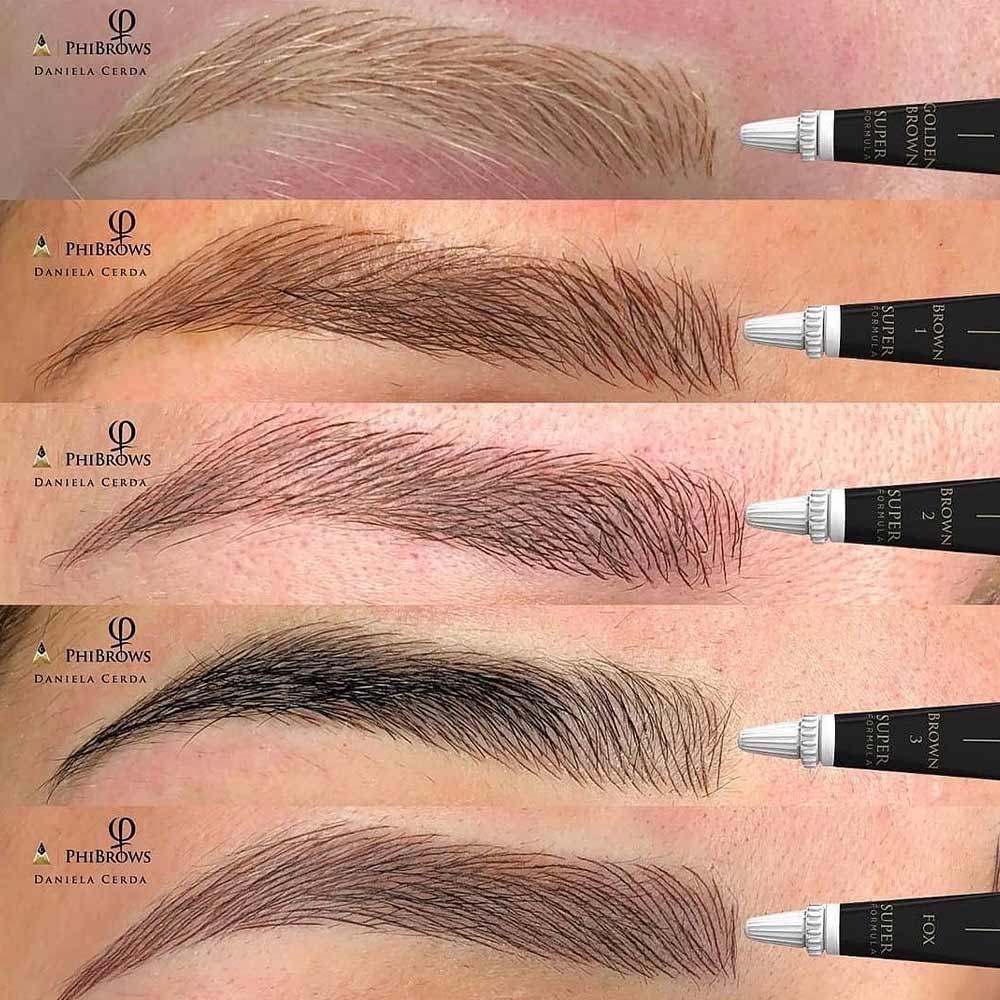
The PhiBrows collection includes 2 types of pigments - basic colors and pre-mixed shades.
Basic Colors
- Red
- Yellow
- Black
These are basic colors which are found in every shade of brown, but in different ratios. They are not meant to be used for microblading on their own: they are mixed together for a shade of brown, or added to pre-mixed colors to modify them.
Pre-Mixed Shades
- Golden Brown
- Brown 1
- Brown 2
- Brown 3
- Fox
These colors can be used for microblading on their own. You don’t have to modify them, like some other brands require, but you can if you need to.
You can mix them together for a custom shade, or you can add the basic colors to warm them up or darken them.
But the way each of the colors was formulated ensures perfect, neutral fading in 99% of cases, so for most clients, there will be no need to modify. We want to make your job easier, not more complicated!
Here’s everything you need to know about every pigment shade and which clients it suits best.
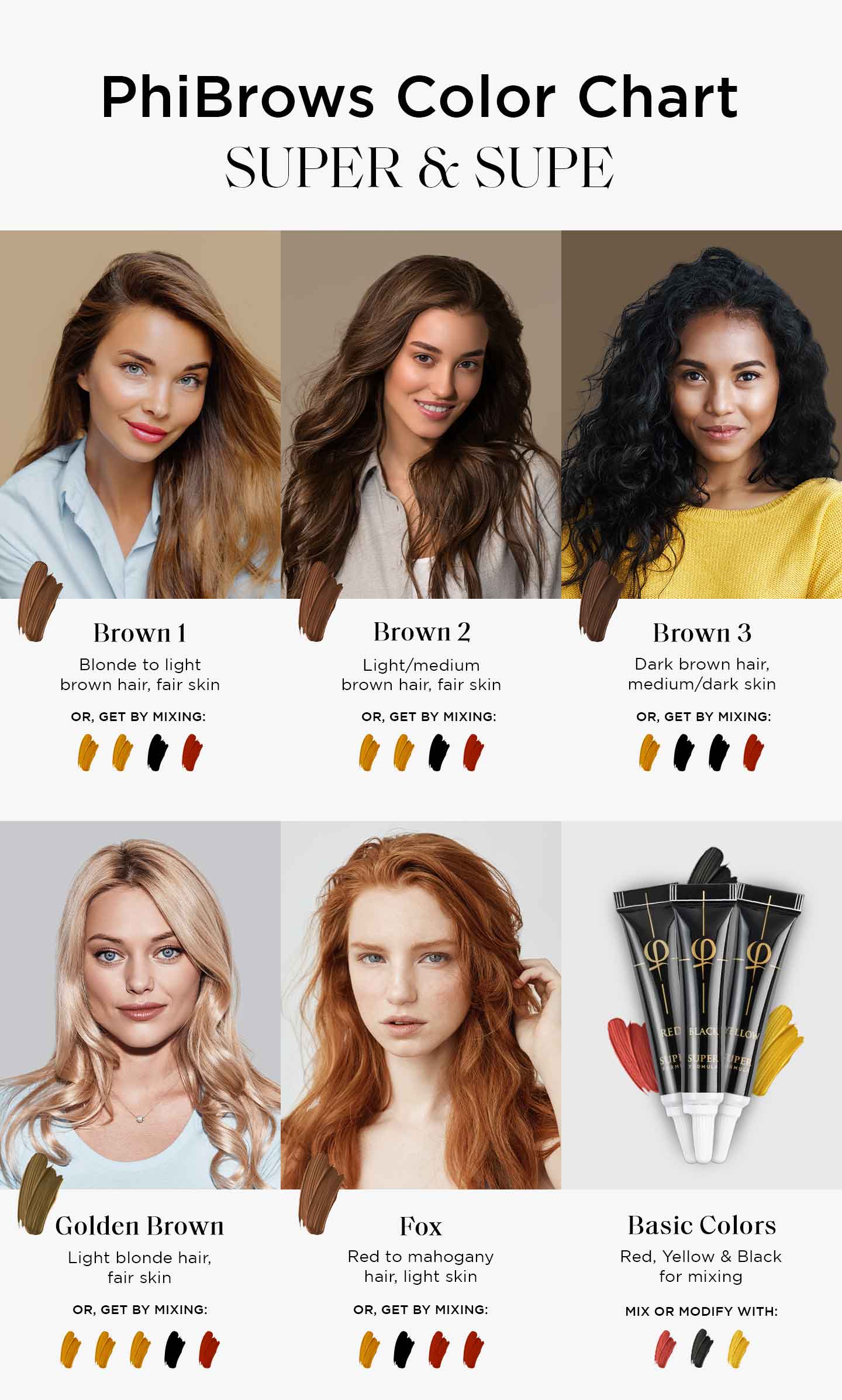
This chart offers guidelines that should serve as a starting point, especially if you’re a newer PhiBrows artist.
It makes color selection much easier and ensures you’re never too far from the perfect shade.
As you gain experience, you can start mixing and blending pigments into unique shades.
So, it’s important for you to go a step further and truly understand the colors of all PhiBrows pigments. Keep reading for some priceless knowledge!
Golden Brown
Golden Brown is the lightest color in the range.
It’s a yellow-based light brown with a delicate golden touch. The pigment has a natural tone for gradual layering with a hyper realistic outcome — a natural appearance without harsh contrasts.
This color is specifically designed for clients who have the Fitzpatrick skin type I — extremely light skin prone to freckles and sunburns, light hair and eyes.
As you can see below, it’s perfect for blondes, from platinum to honey blonde clients with lighter eyebrow hairs, and elderly clients with lighter hair, since all pigments tend to look darker on thin, mature skin.
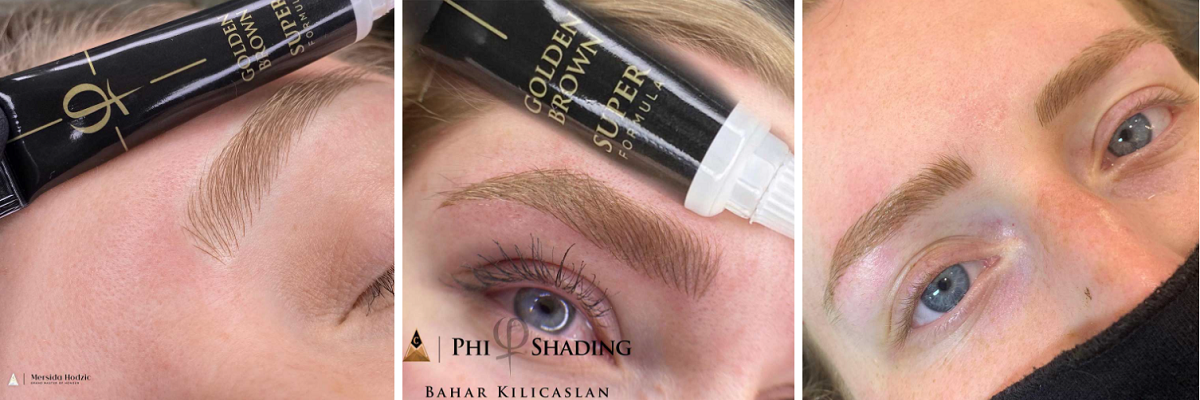
Brown 1
Brown 1 is a little bit darker than Golden Brown, but it’s still a yellow-heavier color.
It’s a lighter-brown pigment that delivers a natural and flattering look for those with light brown hair and lighter skin tones.
With a moderate value and opacity, this pigment prevents sharp contrasts, providing a soft and nuanced effect.
This color should be used on clients who have Fitzpatrick skin types I and II — naturally blonde, ashy blond or very light brown hair, and light skin tone.
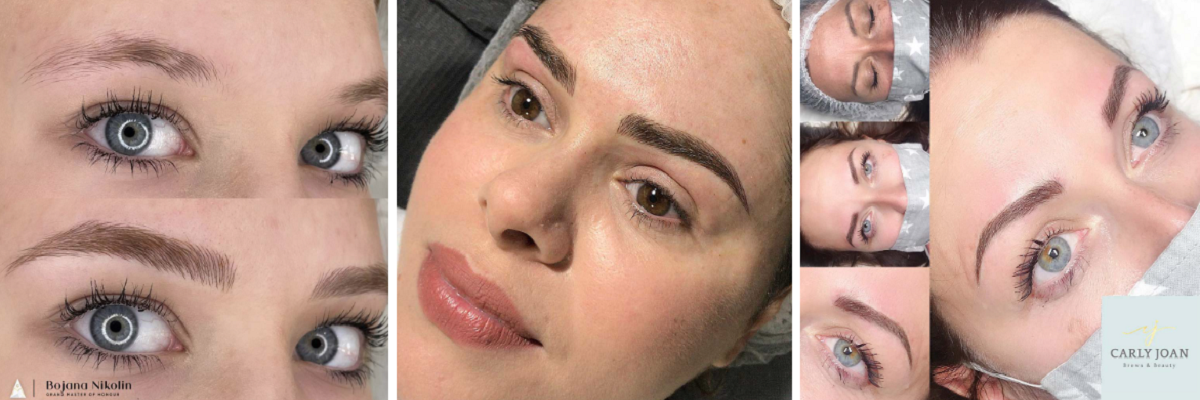
@phibrows_by_ana / @ceciliaescarrega_beautyexpert / @carlyjoanbrowsandbeauty
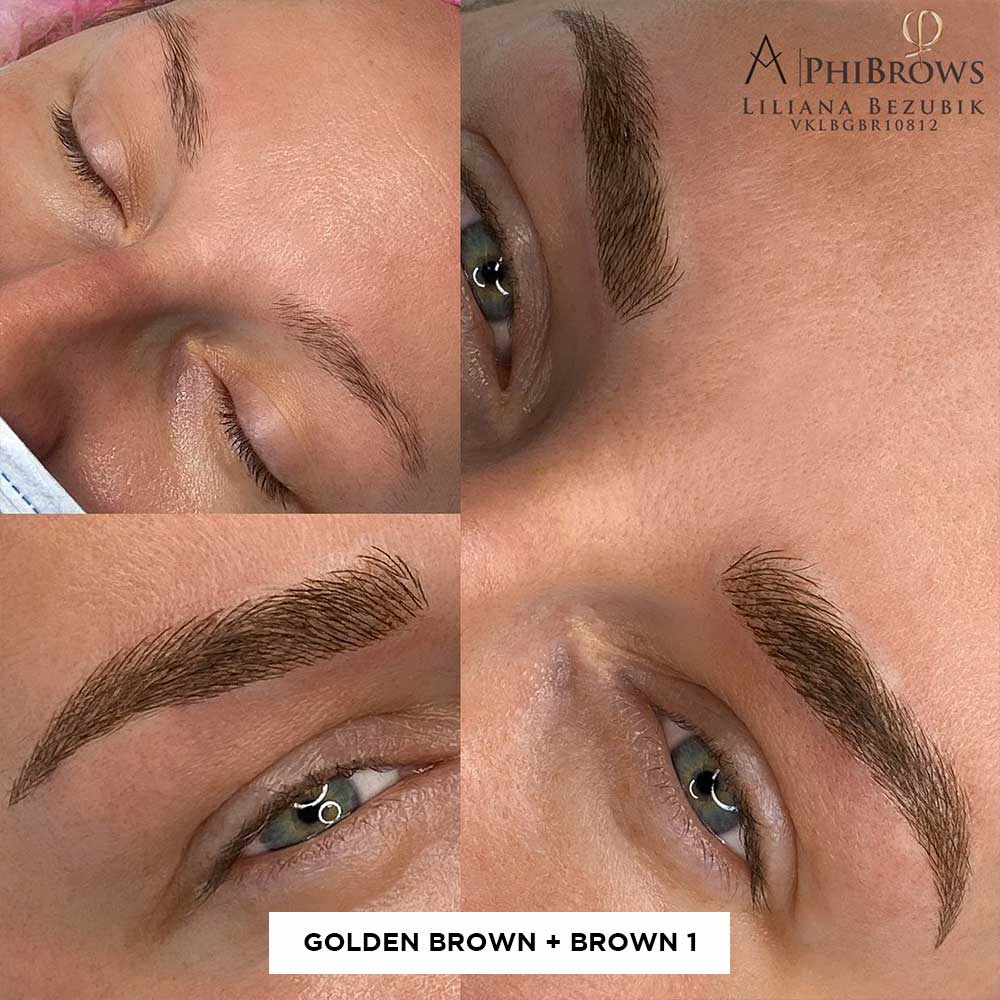
Brown 2
Brown 2 is a neutral brown with a balanced undertone which is neither predominantly yellow nor ashy. This makes it very versatile and suitable for many clients.
This pigment is the one artists can use in 80% of their sessions, on clients who typically have Fitzpatrick skin types I and II, with medium to darker hair.
The pigment boasts a rich and natural brown hue that complements these features, offering a soft and refined outcome.
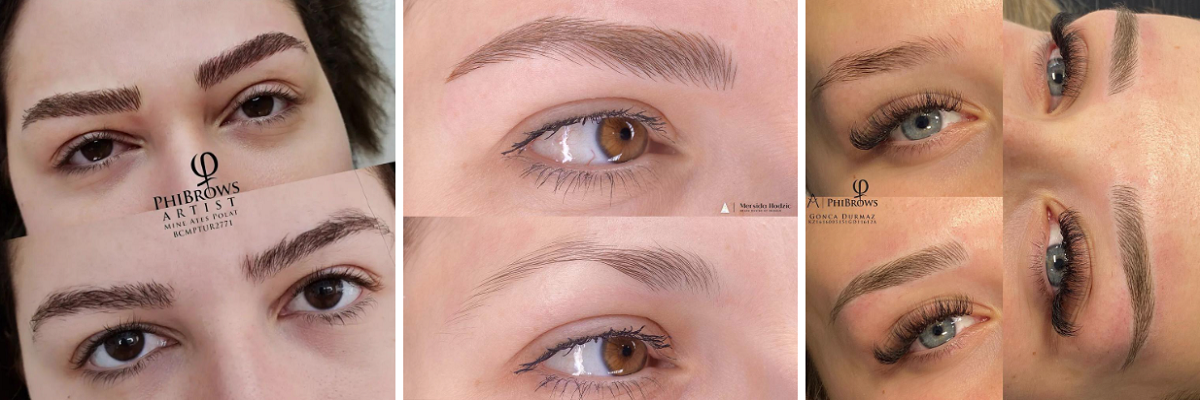
Brown 3
Brown 3 belongs to the category of darker, more intense and deep shades.
It’s also versatile and ideal for clients who have Fitzpatrick skin types III and IV, and it can be darkened further using Black. So it’s good for many clients with darker to almost black skin, hair and eyes.
This pigment features a rich brown hue that harmonizes flawlessly with the natural characteristics of clients with darker complexion.
It also works for clients with lighter skin tones who have dark hair.
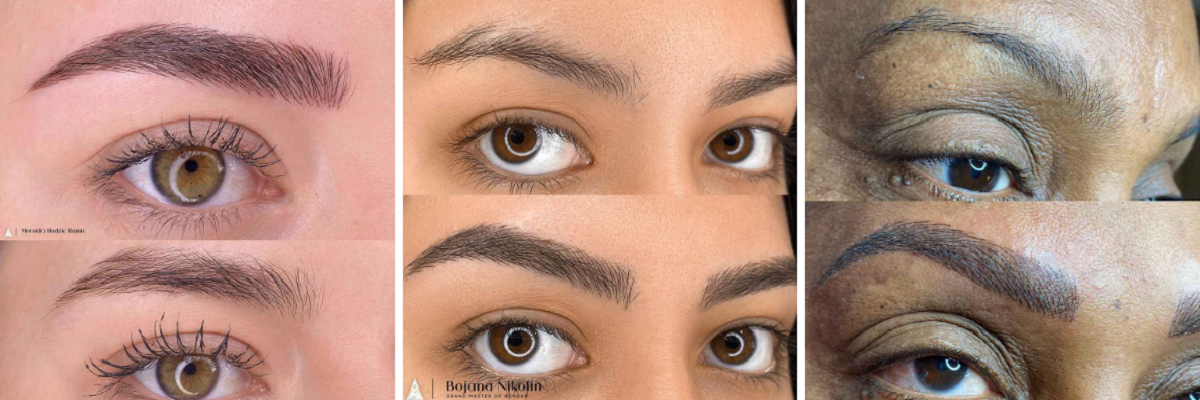
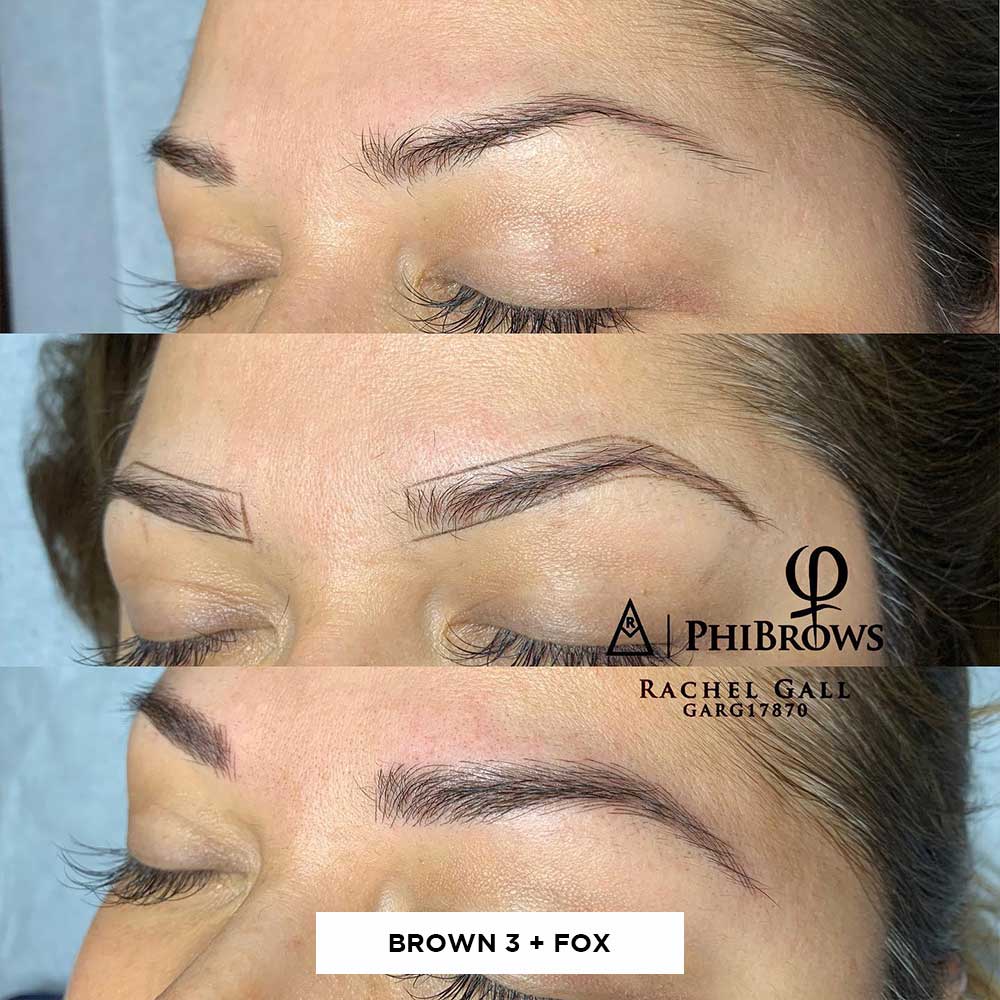
@phibrowsmasterrachel
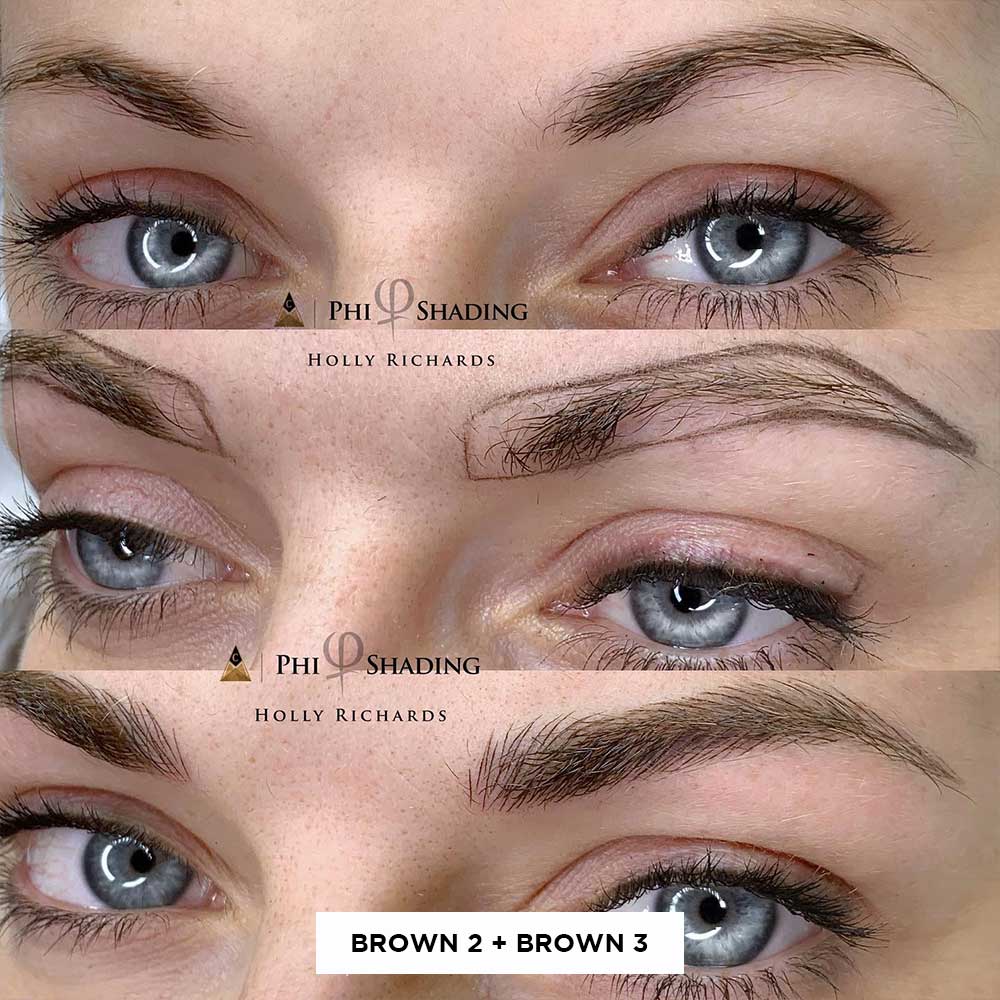
Fox
PhiBrow Fox is a more red-based brownish color, which makes it ideal for natural redheads, or clients who dye their hair red or mahogany and want their brows to match.
The pigment has a warm and natural red hue, designed to harmonize seamlessly with the unique characteristics of Fitzpatrick skin types I and II.
This category includes individuals with lighter skin, maybe even freckles.
With a moderate value and opacity, Fox pigment avoids overpowering contrasts, delivering a soft and natural appearance.
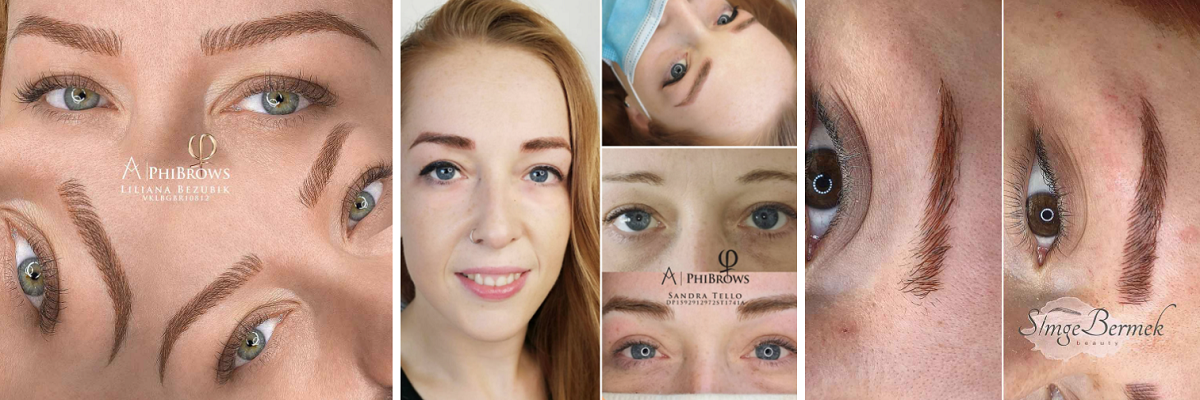
Black
Black is the darkest color in the palette, and it’s most often used for mixing to darken up other shades, most often Brown 3.
It’s not often used on its own, since natural brow hairs are not pure black, not even on clients with the darkest skin tones.
This pigment is specifically tailored for Fitzpatrick skin types V and VI, with black hair and dark skin tones, but again, it is more often used to darken other shades and personalize them, regardless of the client’s Fitzpatrick type.
Red & Yellow
Red and Yellow, along with Black, can be mixed together in different ratios to create a custom shade, or added in small amounts to a certain pigment to modify it - make it warmer.
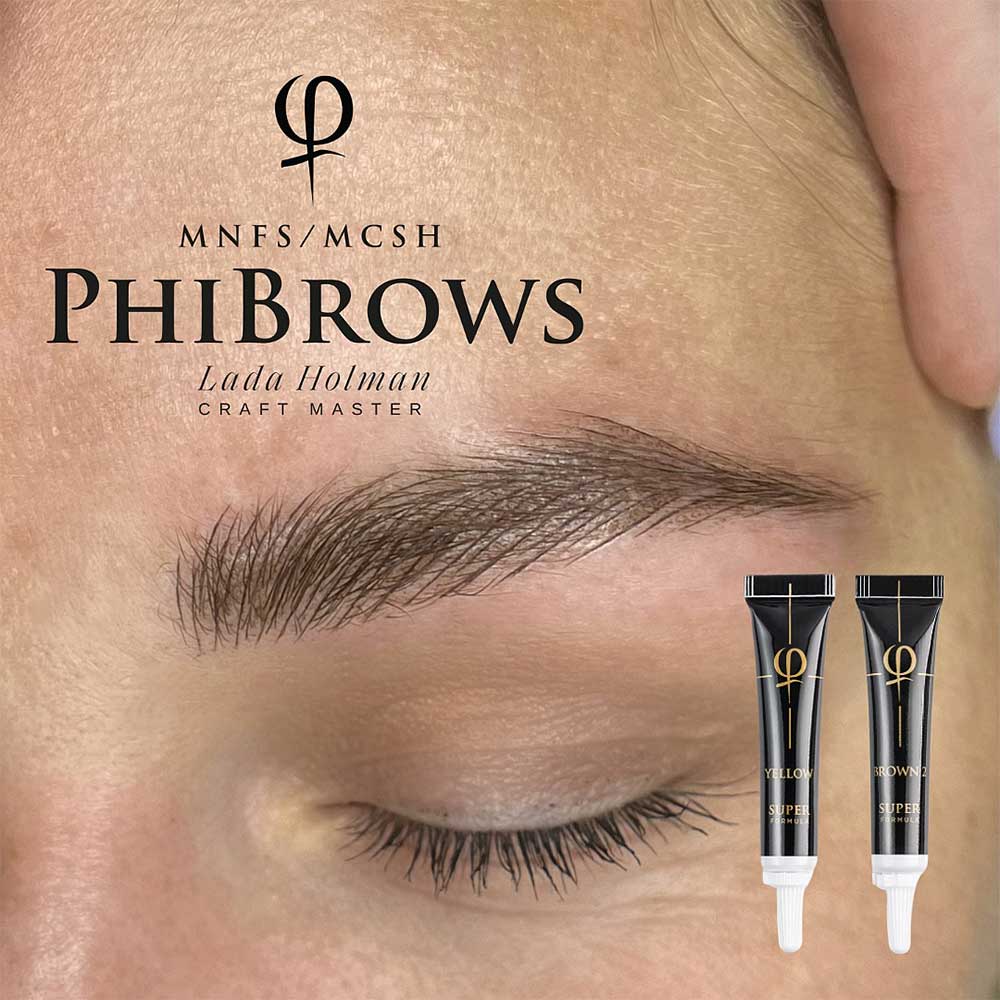
@phibrowsmaster_ladaholman
Red is used in much the same way, only it warms up the color even more intensely and it also neutralizes green.
The way many artists like to use these 2 basic colors, is for doing a pigment mask.
This is a step in the microblading procedure where a layer of color is applied over the microbladed area, to allow the pigment to soak into the strokes and interact with the deposited pigment that way.
Superior Formulas for Extraordinary Results
One of the absolutely game-changing features of the PhiBrows pigments is their honey-like consistency, which - in comparison to more watery alternatives - makes them a dream to microblade with.
In addition, the range offers a diverse palette of beautiful brown shades, plus three basic colors that empower artists to have fun and be creative in creating simple mixes.
But maybe the most impressive feature of the PhiBrows pigments lies in their superior retention. These formulas do not only maintain their vividness but also heal true to their original color.
The two pigment collections, SUPE & SUPER provide the same shades and great quality, but fit into different budgets.
Let’s go through the unique properties of each!
SUPE Pigments
At the very heart of the SUPE collection lies a revolutionary idea — to prevent the color from turning into undesirable shades like red or gray as pigmentation naturally fades.
This is achieved by compressing yellow pigment to have equal stability of all 3 colors - red, yellow, black - in a single pigment that forms a brown color.
As a result, the SUPE pigments do not need to be additionally mixed with base colors - they don’t heal warm.
Plus, the cutting-edge formulation of the SUPE pigments offers some very impressive additional features including:
- No illegal quantities of heavy metals
- No need for shaking before use
- No oil separation
- Hydrophobic pigments
- No reactions with magnets
SUPER Pigments
The SUPER collection builds upon the strengths of the SUPE formula, delivering non-magnetized pigments with optimal retention and true-to-color healing.
These pigments are designed to be extremely clean and stable, making the common problems of discoloration, fading, and pigment migration a thing of the past.
On top of that, each pigment particle is coated in a bioinert substance, which prevents the release of any toxic substances and ensures a safe and smooth interaction between the pigment and the tissue.
All in all, the unique formulation and purity of the pigment enables:
- Faster healing
- Extreme stability
- Safety & health of the clients
PhiApp - Extra Help with Picking the Right Pigment
Now that you have a deeper understanding of the shades, color matching will be much easier. However, if you ever have any doubts about which pigment will suit your client best, don’t worry - PhiApp is here to help!
Try the color-matching feature and work without worries!
